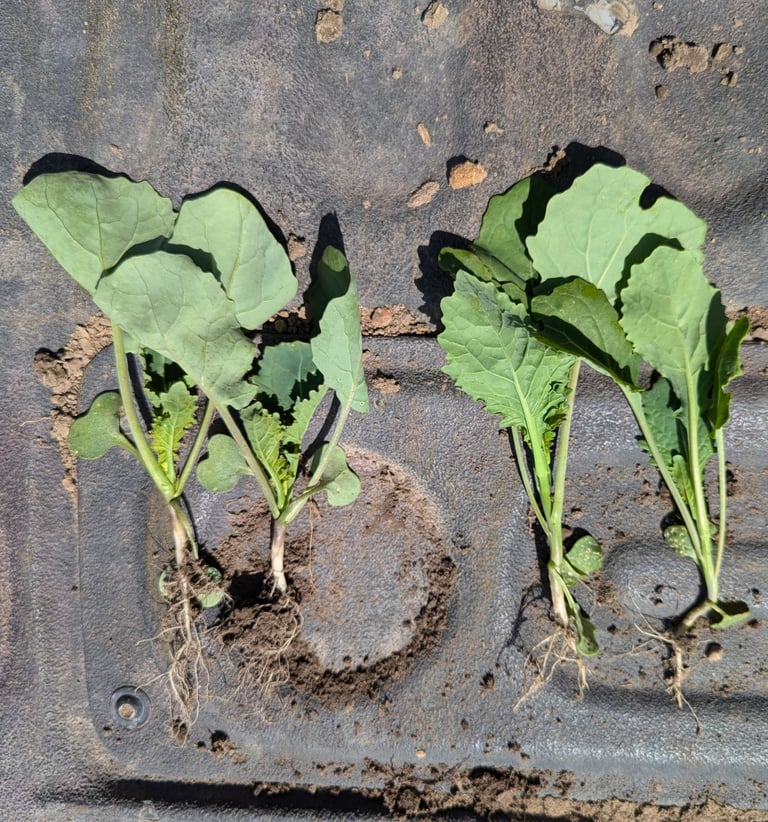Boost Crop Yield with Humic Acids in UAN Solutions
SOIL FERTILITYPLANT HEALTH


Boost your soil health and crop yields by incorporating humic acids into your urea ammonium nitrate (UAN) solutions. This sustainable agriculture technique enhances nitrogen use efficiency, stabilizes ammonia-oxidizing bacteria, and improves soil structure and microbial activity. Recommended application rates range from 0.5% to 5.0%, optimizing nitrogen uptake and reducing environmental impact. Studies show significant increases in crop yield and soil health when using humic acid-enhanced UAN solutions. Discover how this innovative approach can transform your farming practices for better environmental and economic outcomes.
Boosting Soil Health and Crop Yields with Humic Acids and Urea Ammonium Nitrate (UAN)
In sustainable agriculture, optimizing nitrogen use efficiency (NUE) and reducing nitrogen losses are critical for improving crop yields and maintaining soil health. Recent research highlights the effectiveness of humic acids (HAs) when incorporated into urea ammonium nitrate (UAN) solutions. This combined approach not only enhances nitrogen uptake but also improves overall soil structure and microbial activity.
Humic Acids: Role and Benefits
Humic acids, derived from the decomposition of organic matter, play a crucial role in the nitrogen cycle. They improve soil structure, enhance water retention, and increase nutrient availability. These organic compounds are particularly effective when used in combination with nitrogen fertilizers like UAN.
Application Rates
The incorporation of HAs into UAN solutions is recommended at varying rates based on specific agricultural needs:
0.2% to 0.5% HAs: Lower concentrations such as 0.5% are effective in enhancing nitrogen uptake and improving crop yield. This rate has been shown to optimize fertilizer-N fate, increase economic benefits, and promote higher spike numbers in crops like winter wheat (MDPI) (MDPI).
Higher concentrations (up to 5.0%): Used for more substantial improvements in soil health and nitrogen retention. These higher concentrations further enhance biomass production, nitrogen uptake, and reduce nitrogen loss through leaching and volatilization (MDPI).
Mechanisms of Action
Humic acids inhibit the rapid hydrolysis of urea to ammonium, reducing ammonia volatilization and nitrogen leaching. This controlled release ensures a steady nitrogen supply, enhancing NUE and supporting healthy plant growth. The functional groups in HAs, such as carboxylic and phenolic groups, play a critical role in nutrient chelation and soil structure improvement (Frontiers) (IntechOpen - Open Science Open Minds).
Research Findings
Studies have demonstrated the following benefits of using HAs with UAN solutions:
Stabilization of Ammonia Oxidizing Bacteria (AOB):
HAs result in a more stable AOB population compared to urea alone, with higher initial increases and sustained levels over time. This stabilization helps in maintaining an efficient nitrogen cycle in the soil (IntechOpen - Open Science Open Minds).
Improved Nitrification Process:
HAs moderate the conversion of ammonium to nitrate, leading to a gradual and sustained increase in nitrate levels. This process reduces nitrogen loss and improves nitrogen availability for plants (IntechOpen - Open Science Open Minds).
Enhanced Soil Health and Microbial Community:
HAs help maintain a stable and diverse microbial community, which is crucial for long-term soil health and productivity. They improve soil physical properties like texture and water-holding capacity, which are essential for crop performance (Frontiers).
Increased Crop Yield and Quality:
Applications of humic acid-enhanced UAN solutions have significantly increased crop yields. For instance, winter wheat treated with HAs showed higher grain yield and aboveground biomass compared to conventional urea treatments (MDPI).
Incorporating humic acids into UAN solutions is a sustainable strategy to improve nitrogen use efficiency, enhance soil health, and boost crop yields. Farmers can achieve better environmental and economic outcomes by following recommended application rates and guidelines. For optimal results, it is advisable to consult with one of our team members to tailor the application rates based on local soil tests and crop needs.




